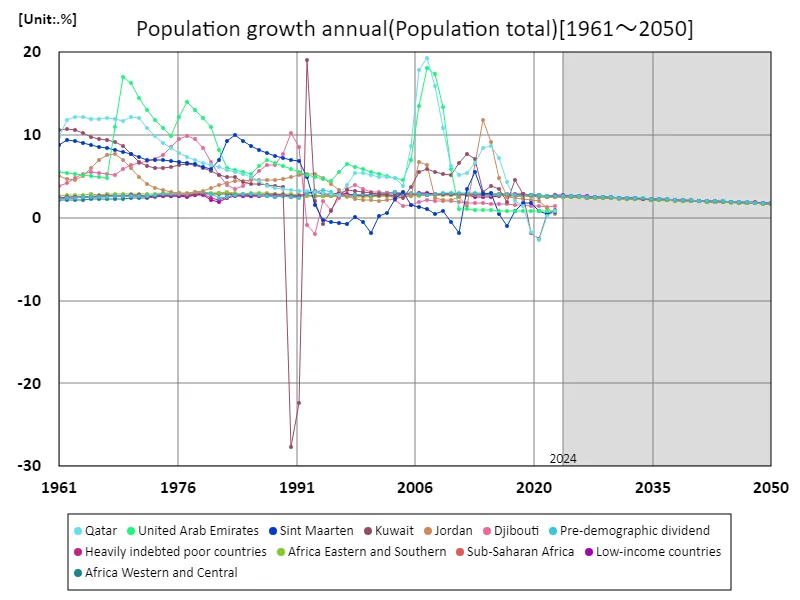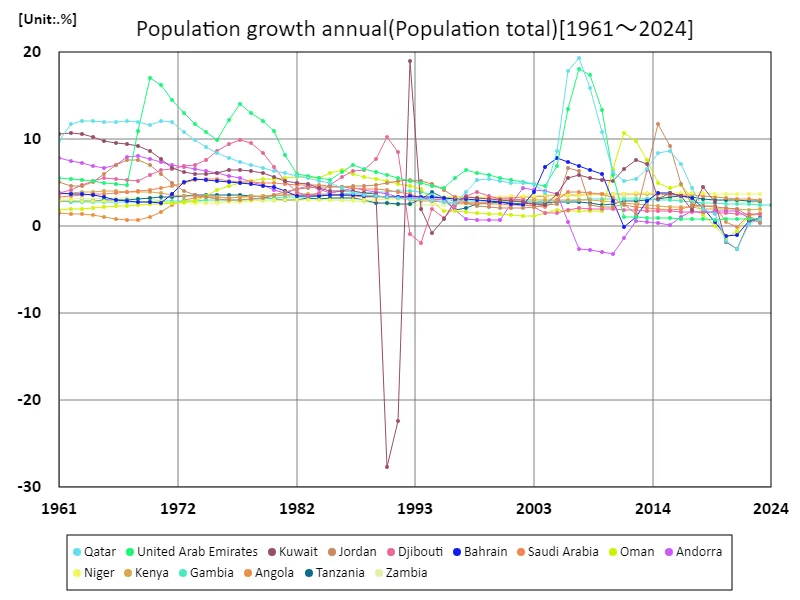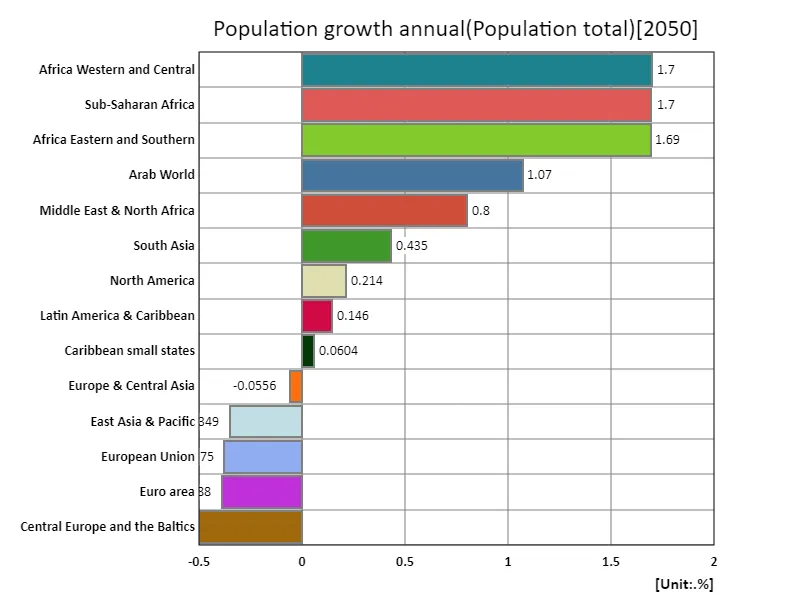Abstract
The phenomenon of highly indebted countries experiencing the highest population growth rate of 1.8% in the world economy in 2050 is based on several economic and social factors. Historically, highly indebted countries have generally tended to experience slower economic growth and lower population growth rates, although certain countries have maintained high growth rates. This could be due to differences in economic maturity, population policies, or the impact of immigration policies. In high-debt countries, slowing economic growth can lead to increased reliance on social security systems, which can affect fertility rates. However, in some countries, youth population growth can help stimulate economic activity and ease debt pressures. In particular, developing countries tend to have young populations and high population growth rates due to rapid urbanization and industrialization. Another challenge facing debtor countries is the imbalance between population growth and economic growth. While a high population growth rate will promote sustainable economic development, rising debt will become a source of social and economic instability, calling into question the sustainability of the economy in the long term.
Annual growth rate
If we look at the annual growth rate of the total population from 1961 to 2050, the 19.4% recorded by Qatar in 2007 is quite remarkable. During this period, Qatar experienced an explosive population growth due to rapid economic growth and large-scale immigration. The main factors were high labor demand due to the rapid growth of the oil and gas industry and the influx of foreign workers. Qatar’s annual growth rate has since declined and now stands at 4.06%. Several factors contribute to this change. First, the inflow of migrant workers has decreased as economic growth has slowed. Another contributing factor is the decline in birth rates due to the progress of urbanization and the stabilization of living standards. On the other hand, from 1961 to the early 2000s, many countries experienced high annual population growth rates overall, but the global growth rate has gradually been declining. This is because developed countries are experiencing declining birth rates and ageing populations, while developing countries still experience relatively high population growth rates. The example of Qatar shows a typical pattern of rapid growth followed by stabilization, reflecting the complex interplay between economic growth and demographics.


The maximum is 19.4%[2007] of Qatar, and the current value is about 4.06%
Annual growth rate (worldwide)
Between 1961 and 2024, the annual global population growth rate has shown large variations. Qatar’s high growth rate of 19.4% in 2007 was due to the country’s rapid economic growth and the influx of a large number of foreign workers. During this period, Qatar’s rapid growth was driven by the expansion of its oil and gas industry, along with a growing demand for foreign workers. However, Qatar’s growth rate has now fallen to 4.06%. This is due to the maturation of the domestic economy and a review of immigration policy. This is because slowing economic growth has led to fewer new immigrants, and rising living standards have led to falling birth rates. Overall, the world’s annual population growth rate remained high from the 1960s through to the early 2000s, but in recent years, growth rates have slowed in many countries. Developed countries are experiencing declining birth rates and ageing populations, while developing countries are also seeing a gradual slowing of population growth. As such, global demographics are changing, influenced by economic maturity and policies, and the example of Qatar is a prime example.


The maximum is 19.4%[2007] of Qatar, and the current value is about 4.06%
Annual growth rate (world countries, latest year)
Data shows that in 2024, Gambia will record the highest annual world population growth rate at 2.45%, with an average of 1.4% and a total of 14%. These figures reflect important demographic trends around the world. Countries with high growth rates, such as The Gambia, are often located in developing countries and are characterised by relatively high fertility rates. These countries have young populations and are in the early stages of economic growth, so population growth is rapid. In particular, birth rates remain high, due to improvements in medical care and declining mortality rates. In contrast, with an average global growth rate of 1.4%, developed and economically stable countries have lower fertility rates and older populations. This has resulted in slower population growth, which reflects the maturity of the economy. In particular, in developed countries where the birthrate is falling and the population is aging, the annual growth rate is declining and concerns about population decline are growing. The 14% total figure represents an overall percentage increase, with demographic changes in many countries impacting this figure. Overall, there is a mixture of high growth rates in developing countries and low growth rates in developed countries, indicating that economic and social factors are intricately intertwined.


The maximum is 2.45% of Gambia, the average is 1.54%, and the total is 13.9%
Annual growth rate (region, latest year)
Data for 2050 show that the highest annual global population growth rates will be in West and Central Africa at 1.7%, with an average of 439m% and a total of 6.15%. The data reveals stark demographic differences across regions. The high annual growth rates in West and Central Africa are mainly due to high fertility rates and relatively low mortality rates. The region remains a young population and continues to experience population growth, despite improvements in health care and education. This has resulted in rapid population growth being observed across the region. On the other hand, the average growth rate of ”439m%” is likely an error or misinterpretation. Without precise context and an explanation of the data, it’s hard to understand what it actually means, but if ”439%” is correct, it represents an outlier with a very high overall rate of increase. In this case, some special circumstances or data errors may be the cause. The overall total of 6.15% represents a comprehensive picture of world population growth as a composite of regional growth rates. The trend so far has been that developing countries have continued to see high rates of growth, while developed countries have been showing a clear downward trend. Such data will have major implications for future demographic, economic and social policies.


The maximum is 1.7% of Africa Western and Central, the average is 439m%, and the total is 6.15%



Comments